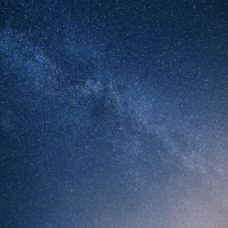Nearly a billion people worldwide still live in the dark, with no electricity at all. In rural America, roughly 16% of all American households bear a greater energy burden compared to those in metropolitan areas.
During the night, solar cells are useless in off-grid regions, but this is where radiative cooling comes in.
This natural process, also called passive cooling, is one of the most affordable and reliable ways to provide communities in remote areas access to electricity.
Radiative Cooling, a Complementary to Solar
Material scientists and engineers at the University of California, Los Angeles (UCLA) and Stanford University have designed a thermoelectric device that generates light from nothing than the cold, night sky.
While photovoltaic systems can fulfill the power needs during the day, they can’t harness the waste power of the cold darkness of space.
The UCLA and Stanford system was explicitly designed for that, as a low-cost alternative to solar cells for night-time.
“Remarkably, the device is able to generate electricity at night, when solar cells don’t work,” says lead author Aaswath Raman, assistant professor of materials science and engineering at UCLA.
“Beyond lighting, we believe this could be a broadly enabling approach to power generation suitable for remote locations, and anywhere where power generation at night is needed.”
In 2018, professor Raman gave a TED talk where he explained how radiative cooling works and how the “night-sky cooling” technology can revolutionize current cooling systems.
The UCLA/Stanford team led by Raman wanted to go as low-cost as they can get. They built their passive thermoelectric generator using cheap components found in stores and costing less than $30 USD, like thermoelectric modulator, sheet metal, and Styrofoam.
The system produces 25 milliwatts per square meter, enough energy to passively power a LED light and keep it on through the night.
As professor Raman notes, there’s, however, a caveat in that the amount of power the system can generate is minimal. But the technology can be scaled to meet some energy demands, like passively powering streetlights during the night, off-grid sensors, and other devices.
“It literally is generating visible light out of the darkness of the sky. This is not even paraphrasing; this is exactly what it is,” Raman said.



















Comments (0)
Least Recent